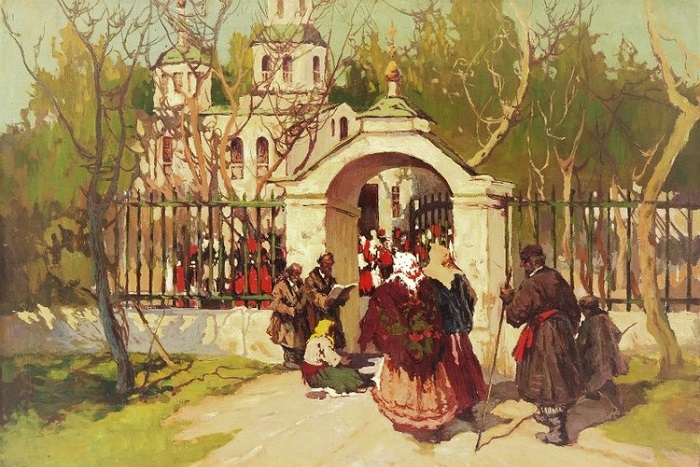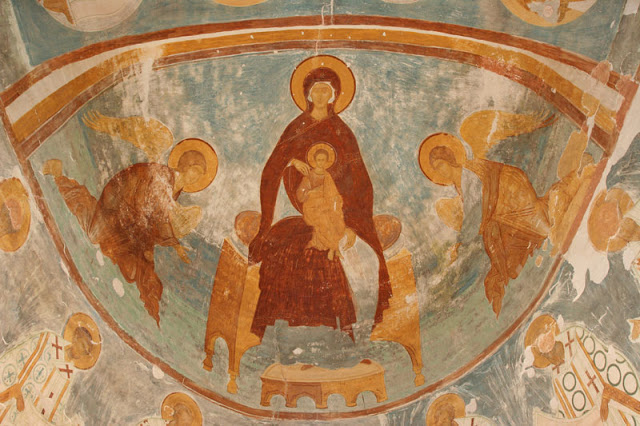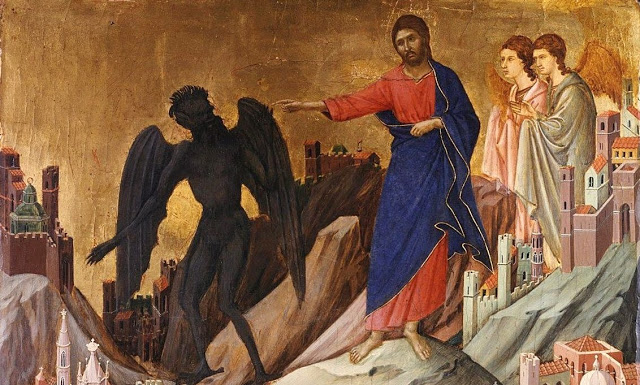
As a rule, a believer should cross and bow three times before entering or leaving a church.
The number three symbolizes the Holy Trinity. Upon entering the church, one should first of all kiss the church icon or the icon of the holiday, which sits on the analogion in the center of the nave. This is how it is normally done: we bow and cross ourselves twice, kiss the icon and bow and cross ourselves once again. When we kiss the icon, it’s like greeting the Owner of the house: God or the heavenly patron of the church (e.g., Saint Nicholas).
Once you do it, it is up to you what to do in the church. You can pass a note with your prayer request or buy some candles and then light them up in front of any icon, and pray. If there is a shrine with the relics of a saint, you should go and venerate it after having kissed the icon of the church or the holiday.
The only restriction on movement in a church is during worship. Ideally, we should come at least half an hour or fifteen minutes before the service starts and do whatever we would like to do: pass our prayer notes to the sanctuary, light up candles, etc., and then take our place, calm down, and get ready for the service, during which we should refrain from moving around the church.
Of course, there are various situations. You can drop in the church before you go to work, at lunchtime, or in the midst of an event that matters a lot to you. You can pass your prayer notes and light up candles, of course, but try and do that as quietly as possible so as not to interfere with the service and not to distract those who are praying.

Anyway, dear brothers and sisters, let me warn you against formal attitude. Hieromartyr Gregory of Schliesselburg said the following words in his sermon on the Sunday of Good Samaritan:
“The Church is not a vending machine that sells salvation. We all come to encounter the Living God in the Church. Of course, the Lord assures us that He is always present in his Church but we still have to meet and touch Christ. To that end, we must make our contact with the Church as involved as the contact with Christ, who is present in the Church invisibly. Our attendance of the church has turned into a soulless formality. Some people think that if an individual goes to church, crosses himself and bows, then he’s done everything there is to be done, and God is now obliged to listen to him and do what he asks for. Once a person takes communion, he is already sure that it is a guarantee of Jesus’s help. That’s a mistake, my brothers. Not every one that saith unto me, Lord, Lord, shall enter into the kingdom of heaven. You can be in the Church but without Christ. You may pray and cross yourself, and receive nothing. You can partake of the Sacrament and incur even greater damnation. I repeat, the Church isn’t a vending machine that sells salvation. There is the Living God in the Church. If you serve him, you shall be heard and get in touch with the source of Life, and receive the power of grace. Therefore, you must make sure that you don’t just stay in church physically, doing the usual routine actions, such as crossing yourself or doing prostrations, but also invest your living soul in serving Jesus. If you do so, you will undoubtedly meet Jesus at the well and He will let you drink the water of life from the fountain of holiness.”

With that in mind, dear readers, let me point out a mistake that is fairly widespread. There are cases when making the sign of the cross turns into chaotic hand waving.
We have to remember that the sign of the cross is itself a kind of prayer. The position of fingers is a visible representation of one’s faith in the two main tenets of the Orthodoxy: the Holy Trinity (three fingers that are put together) and the two natures of our Lord Jesus Christ (the Divine nature and the human nature). By means of this physical interaction with our body, i.e., making the sign of the cross, we profess these truths and sanctify ourselves with them, beginning with our head (that is, the mind), our belly (that is, the heart), the right shoulder and the left shoulder (that is, our body). We always make the sign of the cross in the name of the Father and the Son and the Holy Spirit, calling upon ourselves God’s grace that makes our fallen human nature holy.
Besides, we must remember that we should not idolize the formal etiquette on the one hand and not do it automatically on the other hand. We must be aware of the fact that the Lord is Yahweh, that is, the Being, the Living One in Hebrew. We go to church not just to perform the required ritual but to learn to communicate with the Living God.
Translated by The Catalog of Good Deeds




Thank you for your wonderfully informative and humbling articles. As a convert to Orthodoxy of many years, there are things that come up about Orthodoxy on your site that I was never taught exactly, such as crossing one’s self before icons or relics. I’ll thought it was three times before and three times after veneration, not that the extra we’re not worth while, but that time can be used in other forms of prayer. Again I think your entire web sit is wonderful! Anna W